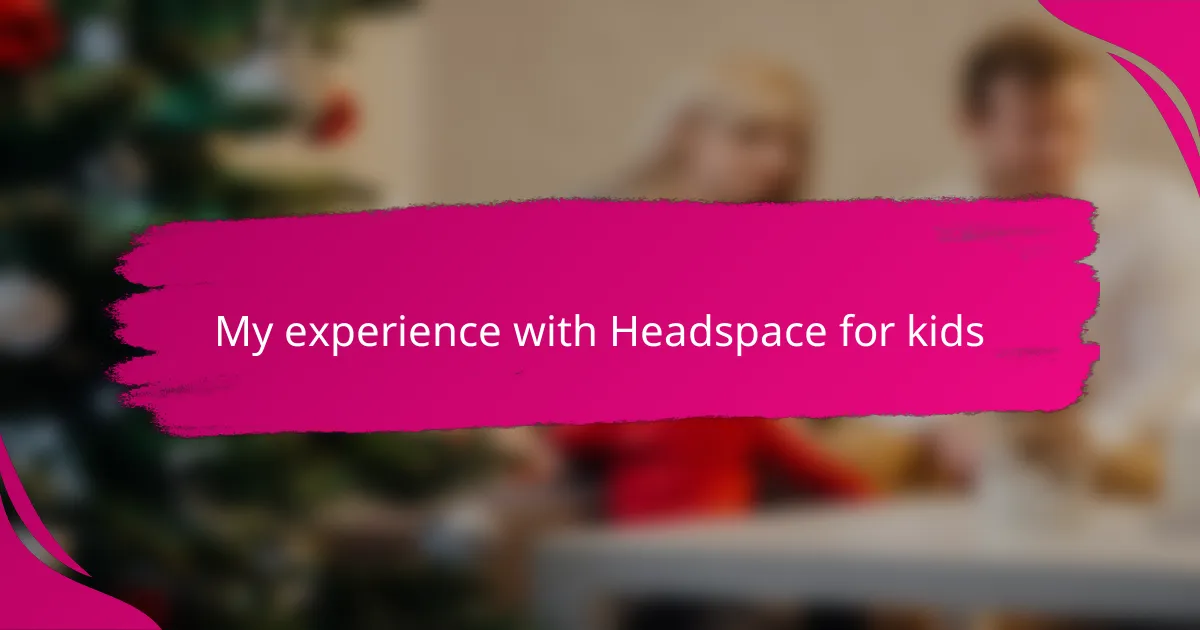Key takeaways
- Headspace for Kids offers tailored meditation sessions that enhance children’s focus, emotional regulation, and sleep through simple language and visuals.
- Daily meditation routines foster calmness and connection, making mindfulness a rewarding shared experience for parents and children.
- The app encourages parental involvement in setting up and engaging with meditation, enhancing children’s enthusiasm and emotional intelligence.
- Using Headspace creates positive shifts in household dynamics, transforming mindfulness into a valuable tool for both kids and parents.
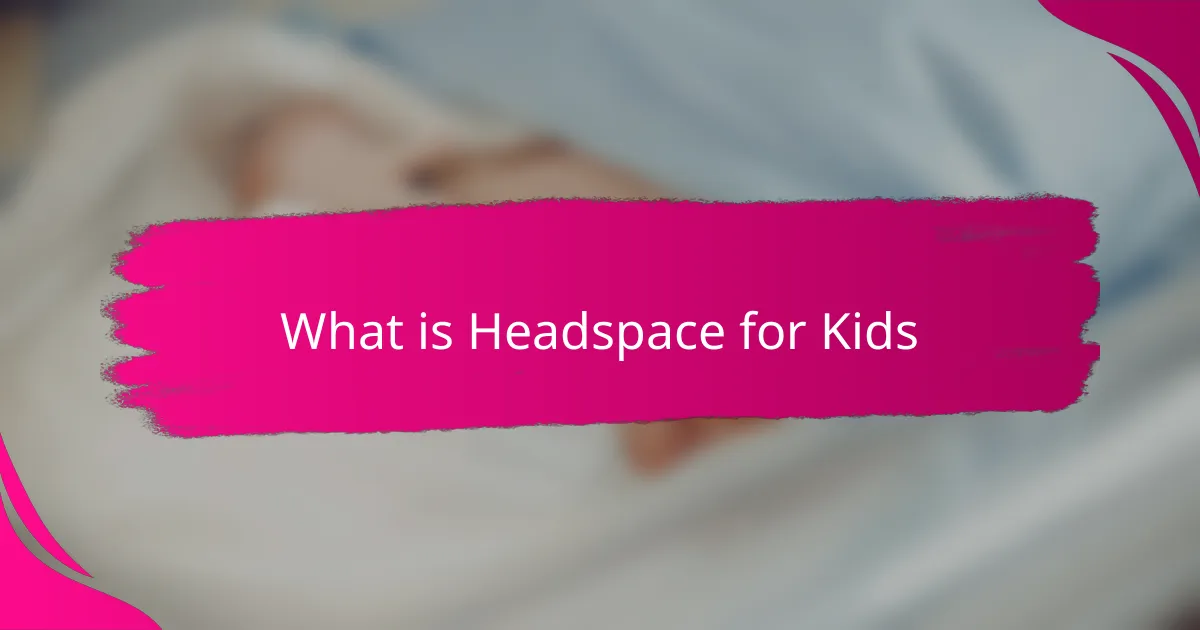
What is Headspace for Kids
Headspace for Kids is a meditation app designed specifically for children. It offers guided sessions tailored to different age groups, focusing on improving attention, emotional regulation, and sleep. When I first introduced it to my child, I was curious if an app could really help with such complex feelings.
What struck me was how the sessions use simple language and calming visuals, making mindfulness approachable even for young minds. Have you noticed how hard it is for kids to sit still or express their emotions? That’s where Headspace for Kids seems to shine—it turns those challenges into fun, manageable activities.
From my experience, it’s not just about meditation; it’s about teaching kids valuable life skills early on. I’ve seen moments when my child seemed more centered and less overwhelmed after just a few sessions—something I didn’t expect from a screen. Would you believe an app could create that kind of calm in your home?
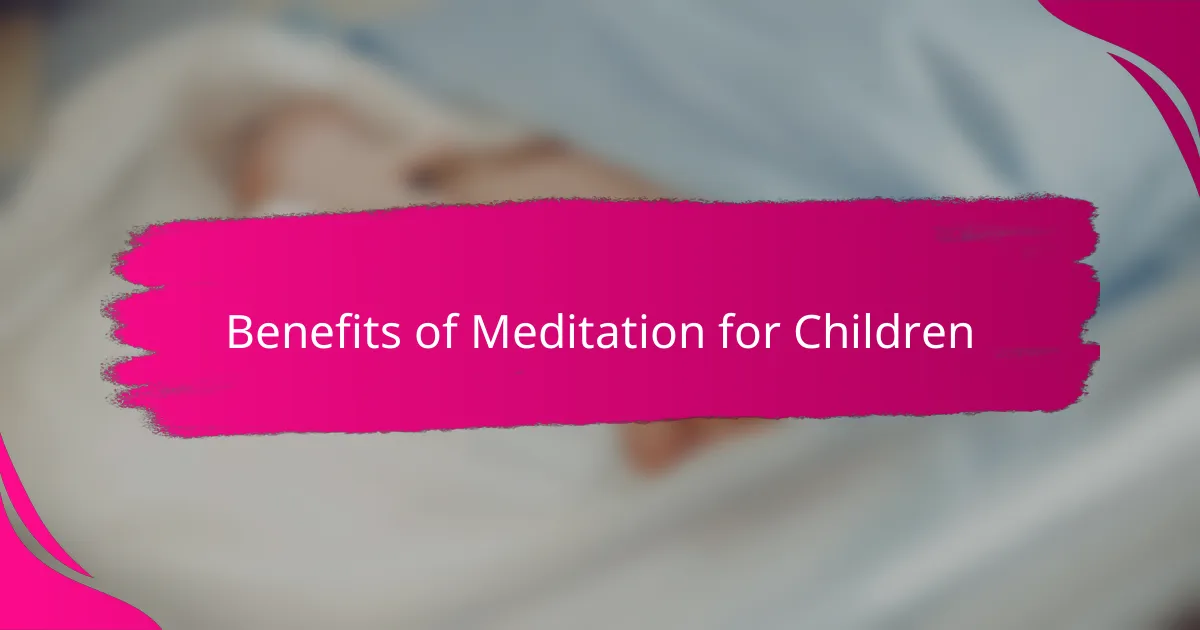
Benefits of Meditation for Children
Meditation for children can boost their ability to focus, which I found incredibly helpful during homework time. It’s amazing how a few minutes of mindfulness can turn a restless child into someone who listens and follows through more easily. Have you ever watched your child struggle with distractions? This simple practice really changes that dynamic.
Emotional regulation is another big win. Kids often feel their emotions intensely but don’t know how to handle them. Through meditation, I noticed my child learning to pause and breathe instead of bursting out in frustration or tears. It felt like watching a skill develop that will serve them for life.
Sleep improved too, which pleasantly surprised me. When bedtime used to be a battle, those calming meditations helped my child unwind and fall asleep faster. It made me realize how important it is to build peaceful routines around rest, especially for growing minds that need it most. Have you experienced those bedtime struggles? Meditation might be the gentle nudge you need.
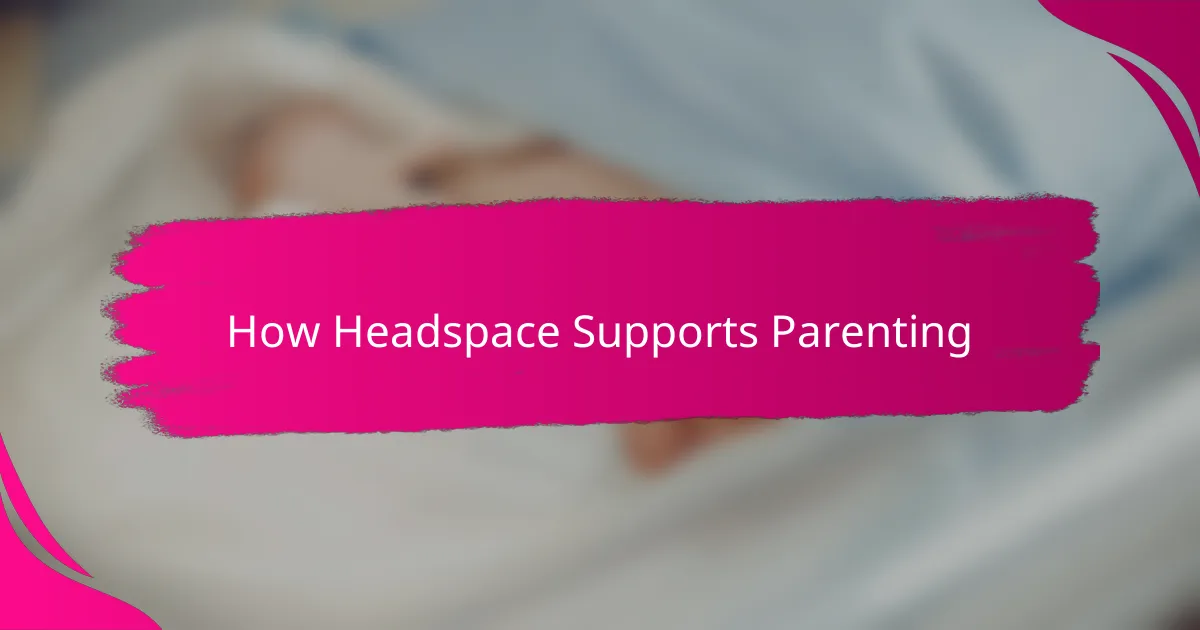
How Headspace Supports Parenting
Headspace supports parenting by giving me a simple tool to help my child develop calm and focus, which eases daily challenges at home. It’s like having a mindful moment ready whenever stress or restlessness creeps in, making tough moments feel more manageable. Have you ever wished for a quick way to reset the mood during a hectic day? That’s exactly what Headspace offers.
What I appreciate most is how it encourages me to be patient and present with my child’s emotions. Instead of reacting to outbursts, I’ve learned to guide my child gently through their feelings using the app’s prompts. It’s transformed some tense situations into moments of connection and understanding between us.
Plus, as a parent, it’s comforting to know I’m teaching my child skills that go beyond the moment—skills like mindfulness and self-regulation that will benefit them for life. Watching my child grow more self-aware and peaceful gives me hope and confidence. Don’t we all want to equip our kids with tools to navigate life’s ups and downs? Headspace feels like a trustworthy ally in that mission.

Setting Up Headspace for Your Child
Setting up Headspace for your child was easier than I expected. I simply downloaded the app, created a profile for my child, and chose the appropriate age group. Have you ever worried about juggling complex settings on a new app? This one keeps it refreshingly straightforward, which made me feel confident right from the start.
One thing I found helpful was exploring the different themed packs with my child before settling on favorites together. It became a little ritual, something we both looked forward to, and it sparked conversations about feelings and calmness that I hadn’t planned on. Have you noticed how involving kids in choices can increase their enthusiasm? This shared process really strengthened our connection.
I also appreciated that the app lets you set reminders, which made consistency much easier for us. At first, I had to remind my child gently, but after a while, completing a session became part of their daily routine. Isn’t it amazing when a simple nudge helps build a lasting habit? This feature turned out to be a small but powerful helper in our mindfulness journey.
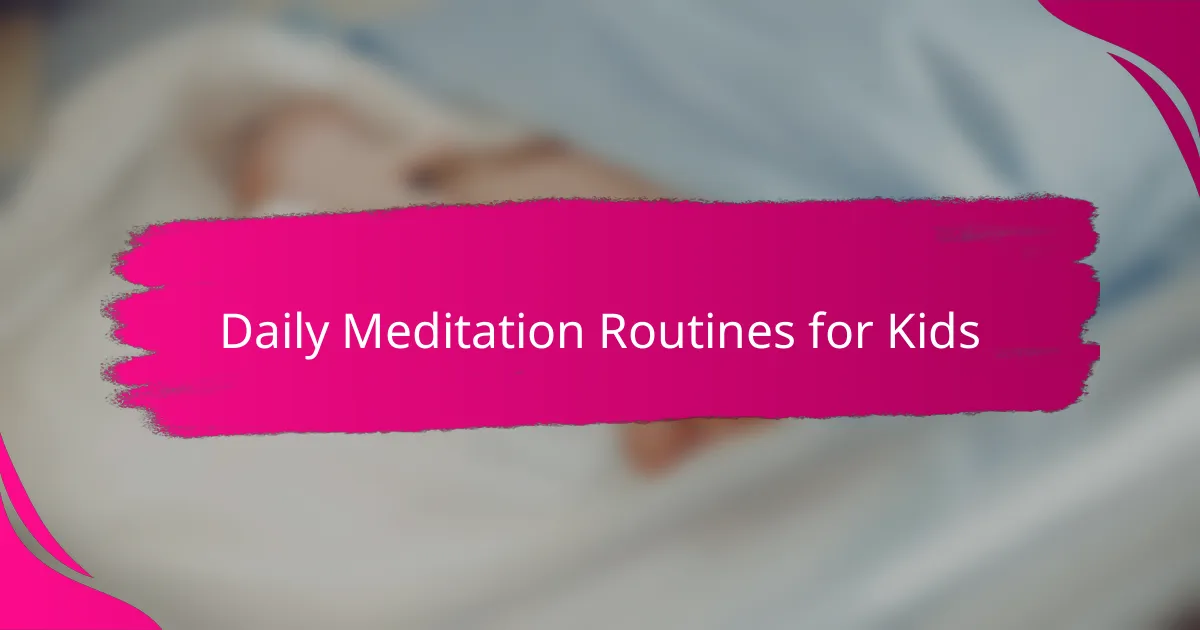
Daily Meditation Routines for Kids
Daily meditation routines with Headspace for Kids quickly became a comforting part of our day. I found that setting aside just five minutes each morning helped my child start the day with a sense of calm and focus. Have you noticed how a small, consistent practice can make even the busiest mornings feel less chaotic?
Sometimes we’d meditate together before bedtime, which turned out to be a special time to wind down and connect. It wasn’t just about quieting the mind—it became our moment of peace amid the usual end-of-day rush. Don’t you think kids benefit from routines that aren’t just functional but also emotionally soothing?
What surprised me most was how naturally the guided sessions fit into our daily rhythm. Even on days full of distractions, my child looked forward to those few focused moments. It made me realize that building a meditation habit isn’t about perfection—it’s about creating a reliable anchor in a child’s often hectic world.
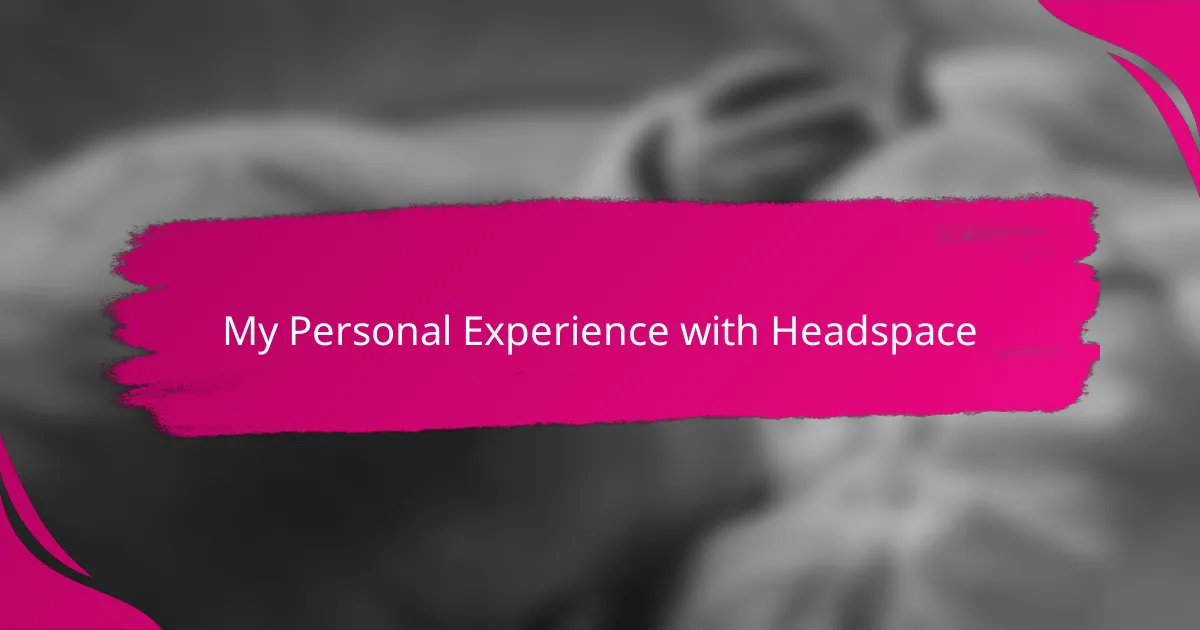
My Personal Experience with Headspace
Using Headspace for Kids with my child has been a surprisingly rewarding experience. At first, I was skeptical about relying on an app for something so personal as mindfulness, but seeing my child’s eagerness to participate and the calm moments that followed really changed my perspective. Have you ever been caught off guard by how technology, when used thoughtfully, can become a positive force in parenting?
One particular moment stands out to me: after a particularly stressful day, my child chose to do a Headspace session instead of retreating into frustration. Watching them take those guided breaths and genuinely settle down was powerful—and it reminded me how vital it is to offer simple tools for emotional regulation. Don’t we all wish for those moments when our kids can self-soothe instead of losing control?
Over time, I noticed a subtle but meaningful shift in our household atmosphere. Meditation sessions became less of a routine chore and more of a shared calm space that we both looked forward to. It made me realize that mindfulness isn’t just a skill for kids—it is a gift for parents too, helping us both navigate the ups and downs of everyday life with a little more patience and presence.
